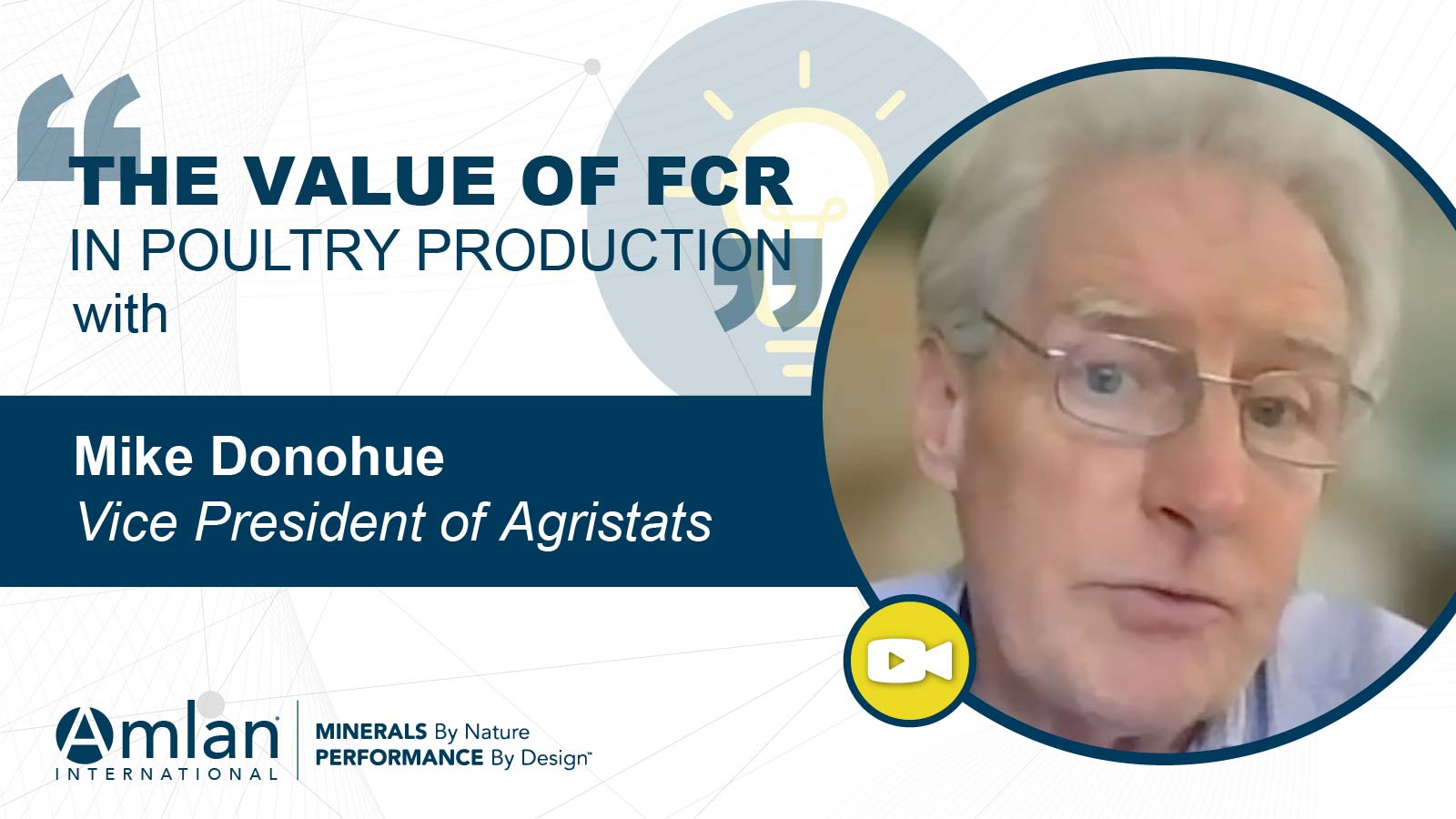Product availability may vary by country, associated claims do not constitute medical claims and may differ based on government requirements.
What does 1% do? If I can improve something by 1%, what does it mean?
In May 2022, we spoke with Mike Donohue, Vice President for Agristats, about how small improvements in the health and performance of broilers can make a significant impact on the economics of poultry production. Mike is a 42-year veteran of the chicken industry and recently celebrated his 25th anniversary with Agristats.
An Industry Responsive to Consumer Demands
To start our conversation, we asked Mike to describe the evolution of the chicken industry, both in the U.S. and globally. “The growth of the chicken industry over the last 35 to 40 years, not just in the United States, but around the world, has been almost explosive,” he said. “China didn’t have anything really until 1980 or so when they started commercial chicken production, and they’ve grown to, I believe, the third largest producer in the world. Brazil is a similar situation; they’ve grown in both domestic demand and international demand. And the U.S. production has probably doubled in the last 15 to 20 years.”
The U.S. industry has also seen shifts in the products they produce, to better cater to consumers who are looking for easy-to-prepare, nutritious protein — at a good price. “We’ve been leaders, the chicken industry, in bringing affordable protein to people, not just in the U.S. but in pretty much every other corner of the world. You can see that by any statistic from the government or others on per capita chicken consumption.”
The Impact of 1%
Healthy birds are needed to supply the millions of tons of chicken meat to consumers, so we asked Mike about the importance of maintaining bird health and the impact bird health has on production. He stressed that all chicken producers are concerned about being good caretakers of their birds, by providing good husbandry and trying to mitigate disease and environmental challenges.
Keeping birds healthy allows for better production performance and livability. Mike explained that livability is an important factor for producers and provided the example below on what 1% improvement in livability can do for revenue.
- The average chicken operation grows about 30 million live pounds a month.
- A 1% increase in livability means:
- 300,000 more live pounds
- 240,000 more finished product pounds (at 80% yield)
- At $1.20/pound, an extra $288,000 in revenue
But increased revenue is just half the story — costs are also affected by a 1% improvement in livability. “Whatever we can do from a management standpoint, from a husbandry standpoint, from a nutrition standpoint, from a veterinary standpoint, to bring more birds to the plant, to bring healthy birds to the plant, the better the performance is going to be and the better the cost of production is going to be for the company,” Mike said. And when input costs are as high as they are now, a healthy bird is even more important.
“How do we get a balanced diet, at the most accessible cost, that helps birds grow quickly and efficiently and live well, all the way through the life of that flock? That’s part of what I work on; that’s part of what the industry works on day after day.”
Investing in the 1% Improvement
If birds aren’t healthy, they don’t convert feed as well, and that’s an added cost to producers. Mike explained that if you can change something in your production setting (e.g., an alternative feed ingredient) that improves bird health — even if it’s an added cost — it typically means a better feed conversion ratio (FCR), which can make a big difference to revenue. But you need to make sure your return on investment makes sense. In the video below, Mike outlines an example of how adding an extra cost that improves FCR by 1% could definitely be worthwhile.
Improving the Bottom Line
A large part of Mike’s job is helping his customers find the 1% they can change — the poultry industry works with some big numbers, so small changes can add up quickly. In this way, Mike and Amlan have similar goals — we want to help our customers make changes to their operation that improve their bottom line. Our range of natural mineral-based feed additives help support optimal bird intestinal health and productivity, while adding value for producers. Thank you, Mike, for showing us the big impact a small change can make.

